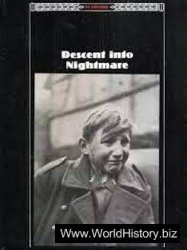Residential suburbs grew in the 1920s because of prosperity, technological developments including the increased use of automobiles and electricity, and a desire by many Americans to live outside the CITIES. A declining HOUSING market in the late 1920s, followed by the onset of the Great Depression, slowed suburban expansion, but a number of New Deal programs under President Franklin D. RooSEVELT helped the housing industry and spurred suburban growth by the mid-1930s. Innovative ADVERTISING schemes and new TECHNOLOGY in housing enhanced the allure of suburbs, and WORLD War II further accelerated economic and population growth in the suburban areas of metropolitan centers. As people sought to escape deteriorating and crowded conditions and undesirable housing in the central cities, the suburban population growth rate jumped from 12 to 32 percent from the 1930s to the 1940s.
Roosevelt’s rallying cry of “get building going” was an attempt to increase construction and put builders back to work, but he also took steps to help homeowners who were in danger of foreclosure. The Home Owners Loan CORPORATION (HOLC) took the initiative by providing funds for assisting banks with defaulted loans and refinancing low-cost mortgages for middle-class homeowners. The success of the HOLC helped win support for other New Deal policies including the Federal Housing Administration (FHA), which stimulated the building and purchasing of new homes in the suburbs. FHA policy also had the effect, not always intended, of reinforcing the white, middle-class character of the suburbs.
Under the auspices of the Resettlement Administration (RA), the Greenbelt New Towns program aimed to relocate urban workers to rental communities outside cities where they would be involved in decision-making for the neighborhood. The first such town, aptly named Green-belt, was located 13 miles outside of Washington, D. C., on an undeveloped tract of 12,000 acres. Preplanned facilities included a town center, school, theater, centrally located artificial lake, and encircling the town, a green belt of grass for gardening and RECREATION. Only two other Greenbelt New Towns communities were constructed: Greenhills, a suburb of Cincinnati; and Greendale, on the outskirts of Milwaukee.
At the same time that the Greenbelt program was being created with government funds, many private developers were experimenting with suburban communities. The building firm of Abraham Levitt and Sons (later famous for the mass-produced postwar “Levittowns”) began building Strathmore-at-Manhasset in assembly line fashion on Long Island, approximately 15 miles from Manhattan. They targeted the upper middle class with brand-name products and high-quality engineering. Rather than adopting the community decision-making policy of the Greenbelt towns, they instituted regulations concerning the appearance of properties. The firm used surveys and advertising to target a specific consumer base and effectively market their homes.
The look of the suburban home changed considerably after the early 1930s. Suburban lots in the older “streetcar suburbs” averaged 3,000 square feet, whereas new housing lots in the more distant “automobile suburbs,” with lower per-acre land costs, averaged 5,000 square feet. New suburban houses were designed to be functional and representative of a simpler lifestyle. Frank Lloyd Wright’s Usonian (United States of North America) designs were published in Life magazine in 1938 and billed as the home for “true Americans.” These one-story homes, which could be prefabricated, averaged only some $5,000 to $6,000 in price and featured flexible, sunlit interiors. Making such functional, attractive, and low-cost housing available for middle-class Americans is sometimes counted Wright’s most important achievement. Likewise, technological improvements such as the attached garage, automatic heating system, storm windows, and power lawn mowers added to the idea of the functional house.
The image of conformity in the suburbs resulted in large part from marketing strategies of the time. Developers created the “model home”—a prebuilt, prefurnished home for prospective buyers to peruse. In 1935, General Electric sponsored an architectural competition to inspire the creation of single-family homes replete with their electric appliances and gadgets. The Ladies’ Home Journal sponsored an exhibit called the “House of Tomorrow” in 1937, which was a precursor to the 1939 New York World’s Fair exhibit of 21 single-family homes within the “Town of Tomorrow.” In the same year, the FHA survey depicted the typical American home to be “bungalows or colonials on ample lots with driveways and garages.” The Ladies’ Home Journal furthered the conformity of housing design with the “dream homes” series from 1941 to 1946.
The immediate postwar period was characterized by explosive growth of suburbs and by the movement of white, middle-class and also working-class families away from the cities and into new homes of their own. Several interrelated factors fueled this rapid development. The American Gross National Product had doubled during World War II, decisively ending the Great Depression. Workers had accrued good wages during the war years and now often possessed significant disposable income. Moreover, under the GI Bill of Rights, the government provided veterans with guaranteed loans for buying homes, while government-subsidized mortgages supported their construction. This ready availability of cash, coupled with pent-up demands for new housing, led to a rapid expansion of new neighborhoods, usually on the outskirts of urban centers. Accordingly, the housing starts, which only tallied 142,000 in 1944, skyrocketed to 1.4 million units by 1950. In 1946, a newly married veteran could purchase a single-family house on a 30-year mortgage for a monthly cost lower than most apartments in downtown sections. More families now owned their homes than at any other period in American history.
The image of suburbs as socially homogeneous areas is thus not wholly accurate. Working-class Americans began to move to the nearer suburbs, and “industrial suburbs” began to encroach upon some middle-class residential suburbs. Other suburbs included a variety of occupational, religious, and ethnic groups. Nonetheless, suburbs were largely middle and upper class and mostly white, partly because of the results, intentional and unintentional, of FHA policies. FHA officials, seeking to minimize loan defaults, favored middle-class loan applicants wanting to build in the suburbs, and FHA guidelines sought to keep “inharmonious” groups apart. Private restrictive covenants barring sales to such groups as African Americans, Jews, Mexican Americans, and Asian Americans also helped keep the suburbs racially homogenous in this era.
For many whites, at least, life in the new suburbs signaled a diametrically different experience from the crowded conditions and grinding deprivation of the depression era. The new houses constructed were relatively spacious, uniform, attractively designed, and laid out in carefully planned neighborhoods. Women, who were typically expected to remain at home to care for the children, enjoyed an array of new and relatively inexpensive home appliances that eased the burdens of daily routines. Better pay and shorter working hours for fathers also led to increased emphasis on family life and entertainment through community interaction, spacious backyards, and the new medium of television. Thus the notion of “the good life,” recently a remote dream for the majority of Americans, had suddenly become the national norm and was exemplified by suburbia, which came to dominate the American social landscape.
Further reading: Robert A. Beauregard, When America Became Suburban (Minneapolis: University of Minnesota Press, 2006); Kenneth T. Jackson, Crabgrass Frontier: The Suburbanization of the United States (New York: Oxford University Press, 1985).
—Traci L. Siegler and John C. Fredriksen




 World History
World History









